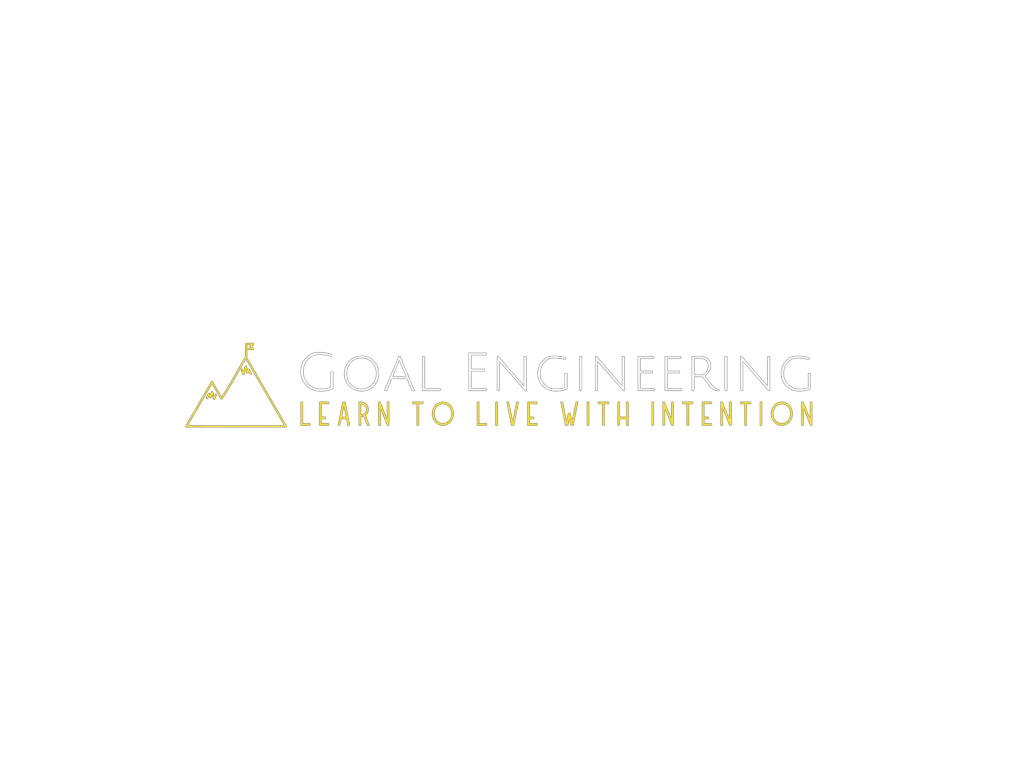I hate it when things are ambiguous. Goal setting used to feel this way until I created a system to keep me on track. Now, it’s much easier to get closer to achieving my dreams every day. Today, I’m going to share how you can set a clear plan that will help you work on your goals daily.
To work on your goals every day, start by identifying clear action steps you’ll take. Then, establish where you want those action steps to lead you each week and long term. And finally, review your progress once per week so you can adjust your action steps and keep yourself consistently moving toward your goals.
Let’s dive into this a little more, starting with action steps!
1. Have Clear Action Steps That You Can Work on Daily
Have you ever seen this video of a guy trying to break a boulder apart? It seems like there’s no way this one man can split a rock that’s 10x his weight.
But at one point as he hits the column of spikes that he’s stuck into the boulder, he steps back, and the rock divides in half.
The rock is like your goals, and action steps are like hammering the spikes. But you have to stick the spikes in and keep whacking them to make progress on your goals every day.
Start by writing your action steps down. But make sure to keep it simple.
The trouble is, most people underestimate how tedious action can be. They go too hard too fast, burn out, and quit before they see results.
Imagine you’re trying to break a huge rock. You have to hit it thousands of times before it splits. It’s the same effort, over and over again, until you get the results you’re looking for.
So, you have to begin small and simple enough that you can stay consistent. Think:
- Working out for 5 minutes instead of an hour
- Writing 250 words a day rather than a whole blog post
- Spending 15 minutes with your kids instead of the whole night
- Reading a non-fiction book for 5 minutes, not 30
As you make progress you can increase the amount of time or the intensity. But you have to start small to make the habit.
For me, I just spend at least 30-45 minutes a day on each of my goals. I only set four goals, one in each major category of life, to make it even simpler.
And on the really tough days, I still spend time working on my goals, but I don’t go as hard.
2. Tie Your Actions to Weekly Outcomes and Larger Milestones
Having a plan to act is step one, but isn’t a goal on its own. If a soccer player just worked on kicking the ball without looking to the goal, they’d never score.
You don’t get purpose or direction without identifying where you want your efforts to take you and then hyperfocusing on that vison. When you do plan where you want to end up, it’s far easier to make progress on your goals daily because you know that every day matters.
To make this simpler, think of it in terms of two parts:
- Weekly Outcomes
- Daily Action Steps
Let’s look at a couple of examples to see how this can work.
Right now my fitness goal is to lose 5% body fat in the next 12 weeks. To get there, I’m working with a coach. He’s helping me exercise daily, eat healthier, and rest and recover. This breaks down to:
- Outcome: lose 5% body fat.
- Actions: daily exercise, healthy eating, and rest.
My financial goal is to develop a writing habit and publish 25-30 more posts on this website. I’m working on that by preparing posts every night while I put my kids to bed. Then, each day I set aside at least 30 minutes in the morning to write. Here’s the action and outcome:
- Outcome: develop a writing habit & publish 25-30 posts
- Actions: prepare posts, write 30 minutes each day
Setting a Larger Vision for Your Life
The next part of this step is to develop a long-term vision for your life. Where do you want to end up in the next few months? What about the next year? Or five years from now?
Answering these questions gives massive motivation when it gets tough because having a vision helps you remember where you want to go so you don’t give up.
Consider what the ideal version of you looks like in terms of your mindset, relationships, finances, and health. Get a clear vision of every aspect of your best self in each of those areas.
Here’s a quick way to get started:
- Compose an email to yourself with a link to this blog post or these steps in the body of the email
- Use the “Schedule Send” feature to schedule it to show up this coming Sunday afternoon or whenever you have time
- When the email comes in, create a Google Doc to journal about these things
- Set aside four sections of the doc, one for mindset, relationships, finances, and health
- In each category, write about what your ideal life and self look like for that category
When you’re done, it’ll be a lot easier to find the specific action steps and outcomes that will take you there. At that point, all you have to do is ask yourself:
- What daily action steps, if I completed them every day for the next year, would 100% get me to where I want to be?
- What weekly and quarterly milestones or outcomes can I set along the way to keep me on track?
Once you have these established, you’ve got to set up a tracking system if you want to continue to succeed.
3. Track Your Goals & Have a Weekly Review to Keep Yourself Going
Having a plan to act is good. Establishing outcomes is better. But the best way to work on your goals every day is to have actions, outcomes, and a way to track them.
There are many ways to track your goals. Try any of these:
- Spreadsheet
- Journal
- An app
- Pen and paper
- Notes on your phone
You’ll have to find what works for you. Just pick one from this list and start with that. It doesn’t matter where you begin, just that you do. This is true for tracking your goals and working on them.
Once you start, you get priceless information that lets you decide how you’ll keep going. But you can only utilize that knowledge if you have time set aside to review your progress and make adjustments.
Most people miss this step in the goal-setting process. And it’s why most people struggle to stick to their goals.
The secret is to find a time each week when you’re not bothered by other commitments. When you can work on the important but not urgent tasks as Stephen Covey talked about in The 7 Habits Of Highly Effective People.
The best time for me is Sunday morning or afternoon. I don’t have to think about work. Nobody else is awake. I can have peace and quiet and as much time as I need.
During this time, you want to:
- Review your progress on your goals that you recorded in whichever tracking method you chose
- See what action steps you didn’t do or which outcomes you didn’t achieve
- Adjust your action steps to be easier if you didn’t do them
- Change your outcomes if you aren’t reaching them and you’re doing your action steps.
To learn more, check out my article on weekly reviews.
Let’s Wrap This Up
In summary, here are the three best ways to work on your goals every day:
- Have clear action steps
- Set outcomes for those action steps
- Track your goals and review your progress each week
I’ve been setting goals since I was about 15-years-old and I wish that I’d known about this back then. Once I discovered and implemented them into my goal-setting process, my consistency and growth skyrocketed.
Because I’ve seen these work, I’m confident that as you set action steps, outcomes, and tracking & review methods, you’ll start to see much faster and more significant progress on your goals every day, week, month, and year.





